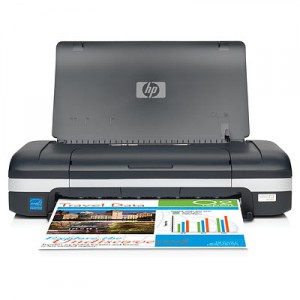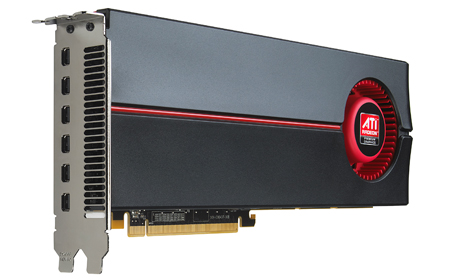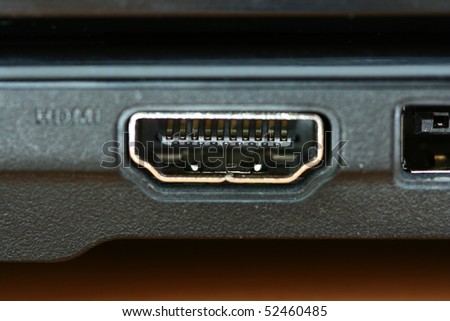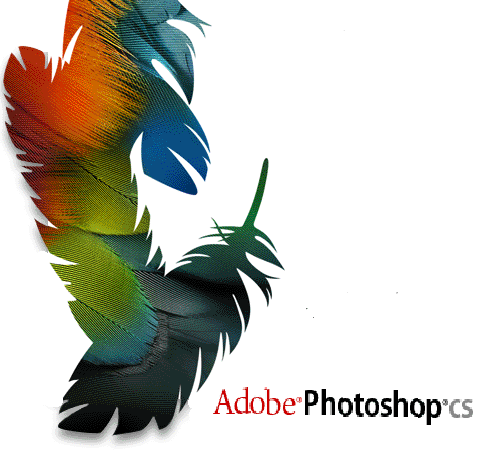Graphical User Interface (GUI)
GUI is an Interface that allows users to interact with their machines or devices using graphics and images rather than text, which is called "command line" interface.
Basically, on a GUI, everything is represented to make the system as user friendly as possible.
For example, on windows, the graphical user interface utilizes icons and windows as their main
user interface.
 |
| Ubuntu 10.10 User Interface |
Word Processor
Word processors are computer applications used to produce any type of printable material.
Microsoft Word is the most widely used word processing software. Microsoft estimates that over 500,000,000 people use the Microsoft Office suite, which includes Word.
Spreadsheet
A spreadsheet is a computer application that simulates a paper, accounting worksheet. It displays multiple cells usually in a two-dimensional matrix or grid consisting of rows and columns. Each cell contains alphanumeric text, numeric values or formulas. A formula defines how the content of that cell is to be calculated from the contents of any other cell (or combination of cells) each time any cell is updated. Spreadsheets are frequently used for financial information because of their ability to re-calculate the entire sheet automatically after a change to a single cell is made. A pseudo third dimension to the matrix is sometimes applied as another layer, or layers/sheets, of two-dimensional data.
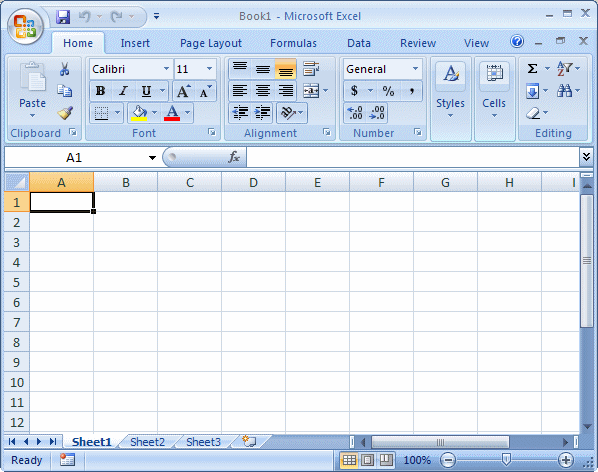 |
| Microsoft Excel |
DBMS
A Database Management System (DBMS) is a set of computer programs that controls the creation, maintenance, and the use of a database. It allows organizations to place control of database development in the hands of database administrators (DBAs) and other specialists. A DBMS is a system software package that helps the use of integrated collection of data records and files known as databases. It allows different user application programs to easily access the same database.
Utility Suites
A software suite or application suite is a collection of computer programs, usually application software and programming software of related functionality, often sharing a more-or-less common user interface and some ability to smoothly exchange data with each other.
Sometimes software makers introduce "suites" that are little more than repackaged versions of older programs offered at a lower price. MS Office is one of the most well knowned utility suites.
Web Authoring
A category of software that enables the user to develop a Web site in a desktop publishing format. The software will generate the required HTML coding for the layout of the Web pages based on what the user designs.
Audio Editing Software
A digital audio editor is a computer application for audio editing, i.e. manipulating digital audio. Digital audio editors are the main software component of a digital audio workstation. An example of an Audio Editing Software is Audacity.
 |
| Abbleton Live, a Mac based Audio Editor |
Bitmap Image
A bitmap or pixmap is a type of memory organization or image file format used to store digital images. The term bitmap comes from the computer programming terminology, meaning just a map of bits, a spatially mapped array of bits. Now, along with pixmap, it commonly refers to the similar concept of a spatially mapped array of pixels. Raster images in general may be referred to as bitmaps or pixmaps, whether synthetic or photographic, in files or memory.
Desktop Publishing Program
Desktop publishing (also known as DTP) combines a personal computer and WYSIWYG page layout software to create publication documents on a computer for either large scale publishing or small scale local multifunction peripheral output and distribution. An example of a DTP software is Adobe FrameMaker.
HTML Editor
An HTML editor is a software application for creating web pages. Although the HTML markup of a web page can be written with any text editor, specialized HTML editors can offer convenience and added functionality. A good example of this is Microsoft Frontpage.
Image Editor
An image editing software is a program or collection of programs that enable a person to manipulate visual images on a computer. The use of a swatch is a palette of active colours that are selected and rearranged by the preference of the user. A swatch may be used in a program or be part of the universal palette on an operating system, it is used to change the colour of a project, that may be text, image or video editing.
Several graphics programs support animation, or digital video. Adobe Photoshop is great example of an Image Edition Software.
Multimedia
Multimedia is media and content that uses a combination of different content forms. The term can be used as a noun (a medium with multiple content forms) or as an adjective describing a medium as having multiple content forms. The term is used in contrast to media which only use traditional forms of printed or hand-produced material. Multimedia includes a combination of text, audio, still images, animation, video, and interactivity content forms.
Vector Image
Vector graphics is the use of geometrical primitives such as points, lines, curves, and shapes or polygon(s), which are all based on mathematical equations, to represent images in computer graphics.
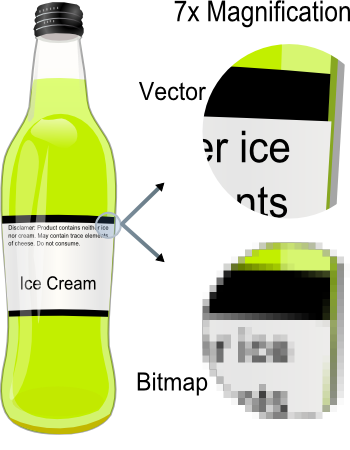 |
| Vector and Normal image comparison |





